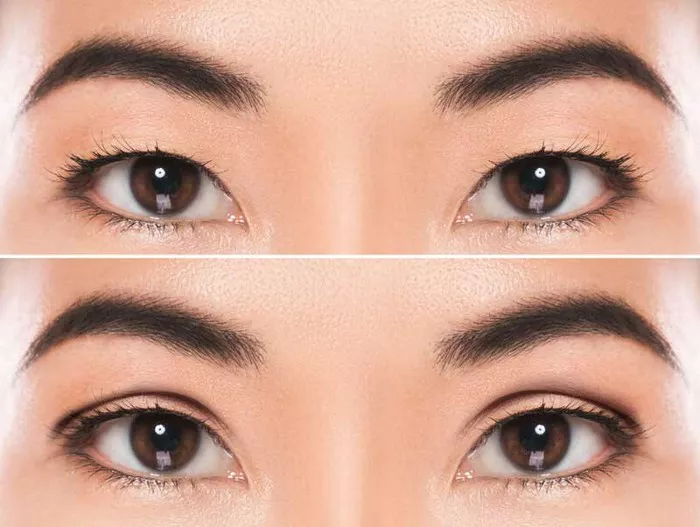Eyelid surgery, also known as blepharoplasty, is a cosmetic procedure that can help rejuvenate the appearance of the eyes by removing excess skin, fat, or muscle from the eyelids. This surgical intervention can address various concerns, such as droopy eyelids, under-eye bags, and puffiness. Like any surgical procedure, eyelid surgery requires a recovery period to ensure optimal healing and satisfactory results. In this article, we will explore the typical timeline and important factors that influence eyelid surgery recovery.
Immediate Postoperative Period: The First Few Days
Immediately following eyelid surgery, patients are usually monitored in a recovery area until the effects of anesthesia wear off. It is common for patients to experience some discomfort, swelling, and bruising during the first few days. The surgeon may prescribe pain medication to manage any postoperative pain. It is crucial to follow all postoperative instructions provided by the surgeon to promote healing and minimize complications.
During this initial stage, it is important to keep the head elevated and apply cold compresses to the eyes to reduce swelling. Strenuous activities and heavy lifting should be avoided to prevent strain on the eyes and promote proper healing. Patients may also be advised to avoid wearing contact lenses or eye makeup for a certain period.
First Week: Swelling and Bruising Subside
As the first week progresses, patients will notice a gradual reduction in swelling and bruising around the eyes. However, it is important to note that every individual heals at their own pace, and the extent of swelling and bruising can vary. Some patients may experience minimal swelling and bruising, while others may require more time for these symptoms to resolve.
During this time, patients may still experience some discomfort, but it should be manageable with prescribed or over-the-counter pain medications. The surgeon may schedule a follow-up appointment during the first week to evaluate the progress of healing and remove any sutures or dressings, if necessary.
Second Week: Return to Normal Activities
By the second week, most patients can expect a significant improvement in their recovery. Swelling and bruising should continue to subside, and any residual discomfort should be minimal. Many individuals feel comfortable enough to resume normal daily activities and return to work.
It is important to note that while the majority of visible swelling and bruising may have resolved, some mild swelling can persist for several weeks. Patients should continue to follow the postoperative instructions provided by their surgeon, including any specific recommendations for eye care, such as applying ointments or eye drops.
Third to Sixth Week: Continued Healing
During the third to sixth week, the healing process continues, and patients should see a steady improvement in their eyelid appearance. Swelling should continue to decrease, and any residual bruising should fade. The incision sites may appear pink or slightly raised, but these effects typically diminish with time.
Patients may gradually reintroduce more strenuous activities, such as exercise, but it is important to listen to the body’s signals and avoid overexertion. It is also advisable to protect the eyes from excessive sun exposure and wear sunglasses to shield them from harmful UV rays.
Long-Term Recovery: Final Results and Scarring
The final results of eyelid surgery may not be fully evident until several months after the procedure. The exact timeline can vary depending on individual healing patterns. While most patients notice a significant improvement in their eyelid appearance by the end of the sixth week, it may take up to six months or longer for the incision lines to fade and refine fully.
The scarring associated with eyelid surgery is usually well-concealed within the natural creases of the eyelids, making it relatively inconspicuous. Proper wound care, including keeping the incision sites clean and moisturized, can help minimize the appearance of scars. Patients should avoid exposing the incisions to excessive sunlight or tanning beds during the healing process to prevent hyperpigmentation.
Factors Affecting Recovery Time
It is important to recognize that the recovery time for eyelid surgery can vary from person to person. Several factors can influence the healing process, including:
Individual Healing Abilities: Each person’s body has its own unique healing capacity, which can impact the speed and quality of recovery.
Extent of the Procedure: The complexity of the eyelid surgery, such as whether it involves the upper or lower eyelids, can affect the recovery time.
Surgeon’s Techniques: The surgical techniques employed by the surgeon can influence the extent of swelling, bruising, and scarring.
Patient Compliance: Following the surgeon’s postoperative instructions diligently can contribute to a smoother and faster recovery.
Overall Health: General health factors, such as age, underlying medical conditions, and lifestyle choices, can influence the recovery process.
Consultation with a Qualified Surgeon
If you are considering eyelid surgery, it is crucial to consult with a qualified and experienced surgeon who can assess your specific needs and provide you with personalized advice. They will explain the procedure in detail, including the expected recovery timeline, potential risks and complications, and answer any questions or concerns you may have.
Eyelid surgery recovery typically lasts a few weeks, with visible improvements observed throughout this period. However, it is important to keep in mind that everyone’s recovery experience may be slightly different. By following the postoperative instructions provided by your surgeon and giving your body ample time to heal, you can enhance the chances of achieving optimal results from your eyelid surgery.


